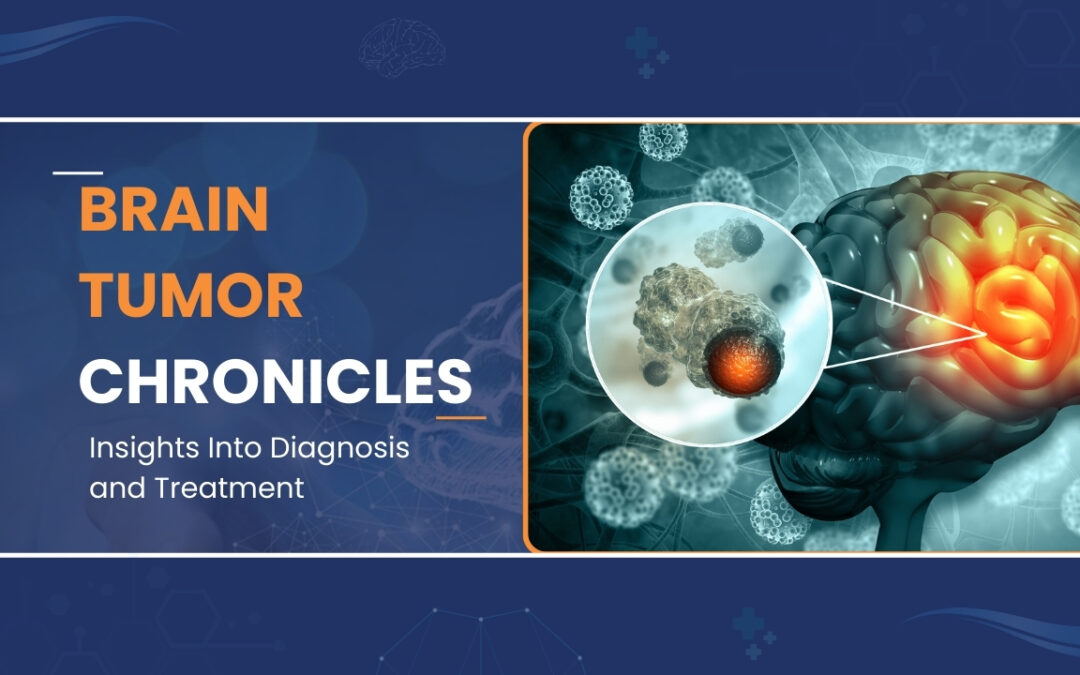Understanding of Brain Tumors
The human brain, a marvel of complexity, faces the enigmatic presence of Brain Tumors. These abnormal growths disrupt the delicate orchestration of neural functions, be they benign or malignant. Primary Brain Tumors originate within the Brain, while secondary tumors may journey from other parts of the body. Our exploration into the diverse forms of Brain Tumors, including Gliomas, Meningiomas, and Pituitary Adenomas, unravels the mystery behind their occurrence, from genetic predispositions and radiation exposure to age and hormonal influences. While the quest for a universal “complete cure” persists, advancements in surgical, radiation, and targeted therapies offer rays of hope in managing and treating these complex intruders.
Different Types of Brain Tumors
The world of Brain Tumors is diverse, presenting unique challenges. Delving into the intricacies of Gliomas, Meningiomas, Pituitary Adenomas, and more is essential for a comprehensive understanding of Brain Tumors’ origins, characteristics, and potential impact on health.
-
Gliomas:
- Astrocytomas, originating from astrocytes, star-shaped cells, include aggressive Glioblastomas.
- Oligodendrogliomas arise from oligodendrocytes, often found in cerebral hemispheres.
- Ependymomas form in ependymal cells lining brain ventricles and the spinal cord’s central canal.
-
Meningiomas:
- Developing in the meninges, the protective layers covering the Brain and spinal cord, Meningiomas are typically slow-growing and frequently benign.
-
Pituitary Adenomas:
- Arising from the Pituitary Gland, these tumors can impact hormone production due to their location near this crucial endocrine organ.
-
Primary CNS Lymphomas:
- Non-Hodgkin lymphomas originating in the Brain, spinal cord, or eye, observed in individuals with compromised immune systems.
-
Germinomas:
- Germ cell tumors commonly occur in the pineal or suprasellar regions of the Brain.
-
Chordomas:
- Rare tumors form in the bone at the base of the skull or along the spine.
Identifying Symptoms and Causes of Brain Tumors
Recognizing symptoms and causes is crucial for early detection. Headaches, seizures, cognitive changes, and more can indicate Brain Tumors. Genetic predisposition, radiation exposure, and hormonal factors contribute to their development.
Causes of Brain Tumors:
Genetic Predisposition:
Inherited genetic conditions, such as neurofibromatosis and Li-Fraumeni syndrome, can elevate the risk of developing brain tumors.
Radiation Exposure:
Previous exposure to ionizing radiation, whether through medical treatments or environmental sources, is a known risk factor.
Immunosuppression: Individuals with weakened immune systems, either due to medical conditions or immunosuppressive medications, may be more susceptible to brain tumors.
Hormonal Factors:
The interplay between hormones and tumor development is evident, as seen in certain tumors like meningiomas.
Environmental Toxins: Exposure to certain chemicals and environmental toxins may contribute to the initiation of brain tumors, although the specific connections are not always well-defined.
Symptoms of Brain Tumors:
Headaches:
Persistent, worsening headaches, especially in the morning or accompanied by nausea, can be indicative of increased intracranial pressure.
Seizures:
Unexplained seizures or a sudden onset of seizures in someone without a history of epilepsy may signal a brain tumor.
Cognitive Changes:
Memory lapses, difficulty concentrating, and alterations in thinking abilities may manifest as cognitive symptoms.
Vision Impairment:
Blurred or double vision, along with a gradual loss of peripheral vision, may be attributed to the pressure on the optic nerves.
Fatigue:
Persistent, unexplained fatigue beyond what is typical for an individual could be a symptom of an underlying issue.
Nausea and Vomiting:
Unexplained nausea and vomiting, unrelated to oth er digestive issues, may be associated with increased intracranial pressure.
Treatment Options and Hope for a Cure from Brain Tumors:
Navigating the diverse landscape of Brain Tumors involves tailored treatment modalities. Surgery, radiation therapy, clinical trials, and targeted therapies are strategic moves in the battle against Brain Tumors. Clinical trials signify not just hope for participants but a commitment to pushing the boundaries of knowledge and treatment possibilities.
Treatment:
- Surgery:
- A frontline warrior, Surgery’s primary role is removing tumors, alleviating pressure on the Brain. Feasibility depends on tumor type, location, and proximity to critical structures.
- Radiation Therapy:
- High-dose radiation targets and shrinks tumors. Technological advancements, like stereotactic radiosurgery, minimize collateral damage. Employed as a primary treatment or post-surgery to eradicate residual cells.
- Clinical Trials:
- Beacons of progress, clinical trials explore novel treatments, providing access to cutting-edge therapies. Participants contribute to the collective advancement of Brain Tumor research.
- Targeted Therapies:
- Precision takes center stage, disrupting specific signaling pathways. Targeting the tumor’s genetic or molecular profile allows for tailored treatment strategies.
Hope for a Cure:
In the quest against Brain Tumors, “Hope for a Cure” emanates from advances in personalized medicine, innovative surgeries, and ongoing genomic research. A multidisciplinary approach, coupled with patient empowerment, shapes a future where targeted therapies redefine outcomes. While a universal “complete cure” remains a journey, progress signals a brighter future. Advances in research and a commitment to transforming the narrative offer rays of hope in the fight against these complex intruders. Together, we navigate a landscape where hope fuels resilience and progress, steering us towards a future free from the shadows of Brain Tumors.Hope for a Cure from Brain Tumors is woven into progress, resilience, and a shared commitment to transforming outcomes. Stay tuned for insights into the impact of Brain Tumors on individuals and their families in our ongoing journey.
Conclusion:
In the ever-evolving landscape of conquering Brain Tumors, we stand united in resilience and progress. The journey against Brain Tumors is a testament to human ingenuity, where advanced treatments and unwavering hope redefine outcomes. As we navigate this intricate terrain, let the stories of triumph illuminate the path forward. Together, we persist in the pursuit of a brighter future, free from the shadows of Brain Tumors. In every breakthrough, in every tale of courage, we witness the indomitable spirit prevailing over Brain Tumors, inspiring optimism and transforming challenges into opportunities for healing and hope.
Professional Assurance: Information provided in this blog is intended for informational purposes only. For personalized advice, we recommend consulting our team of experienced doctors. Your well-being is our priority!https://wellnesshospitals.in/


